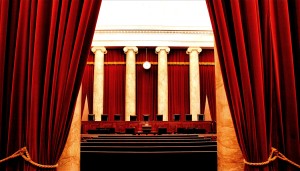Good news for those who respond to and engage in oil spill clean up efforts. In a ruling released on February 16, 2016, the U.S. District Court for the Eastern District of Louisiana, in In re: Oil Spill by the Oil Rig “Deepwater Horizon” in the Gulf of Mexico on April 20, 2010, dismissed, with prejudice, the “B3 Claims Against the Clean-Up Responder Defendants” engaged by the federal government to respond to and clean up the Deepwater Horizon oil spill. Thousands of claims were filed on behalf of boat captains and crew, workers involved in decontaminating vessels, clean-up workers and beach personnel involved in on-shore clean-ups, and residents who live and work in close proximity to coastal waters or who otherwise allege they were exposed to oil and/or dispersants. The defendants, and the manufacturer of the dispersants used, moved to dismiss the claims asserted, arguing, among other things, that they are entitled to derivative immunity under the Clean Water Act, 33 U.S.C. § 1321(j)(8) (CWA), entitled to discretionary function immunity under the Federal Tort Claims Act, 28 U.S.C. § 2680(a) (FTCA), and that plaintiffs’ claims are preempted as a matter of law. The District Court ruled in the defendants’ favor under each theory.
Articles Posted in Environmental
“Waters” Run Through It: Sixth Circuit Confirms Jurisdiction to Hear Challenges to New Rule
The U.S. Court of Appeals for the Sixth Circuit, in In re: United States Department of Defense and United States Environmental Protection Agency Final Rule: Clean Water Rule: Definition of “Waters of the United States,” 80 Fed. Reg. 37,050 (June 29, 2015), in a split opinion, confirmed that it has jurisdiction under the Clean Water Act to hear challenges to the new rule promulgated by the EPA and the U.S. Army Corps of Engineers re-defining the regulatory definition of “Waters of the United States.” Recall that the Sixth Circuit earlier issued a nationwide stay of the implementation of the new rule, pending its determination that it has jurisdiction to hear challenges to this new rule. The regulatory definition of “Waters of the United States” is fundamental to the regulatory operation of the CWA and those required to obtain a CWA permit will be watching the Sixth Circuit carefully.
Texas Supreme Court: In Good Faith? Let the Jury Decide
On January 29, 2016, the Texas Supreme Court, in Railroad Commission of Texas v. Gulf Energy Exploration Corporation, unanimously reversed a decision of the Court of Appeals for the Thirteenth District (Corpus Christi) which had sustained the liability of the Texas Railroad  Commission for the erroneous plugging of an abandoned offshore well, and remanded the matter for a new trial. Under Chapter 89 of the Texas Natural Resources Code, one of the Commission’s responsibilities is to protect Texas’ land and water from pollution by providing additional means to plug abandoned wells. Chapter 89 also provides a “liability defense” to those engaged in plugging operations in good faith.
Commission for the erroneous plugging of an abandoned offshore well, and remanded the matter for a new trial. Under Chapter 89 of the Texas Natural Resources Code, one of the Commission’s responsibilities is to protect Texas’ land and water from pollution by providing additional means to plug abandoned wells. Chapter 89 also provides a “liability defense” to those engaged in plugging operations in good faith.
The Texas Supreme Court ruled that the Commission was entitled to have the jury assess its good faith defense. Interestingly, the Texas Supreme Court also held that the “good faith” defense will also apply to Gulf Energy Exploration Corporation’s breach of contract claim against the Commission, and that the defense is not limited to tort actions.
“Deliberative Process Privilege” Freezes Another FOIA Request in Its Tracks
The Freedom of Information Act (FOIA), first enacted more than 40 years ago, governs the release of information to the public of data generated by and submitted to the federal government. A recent decision by a U.S. District Court in Washington, DC, Competitive Enterprise Institute v. Office of Science and Technology Policy, describes one of the most important exceptions that serves to restrict the release if internal government documents, the “deliberative process privilege.”The District Court discussed this exemption in connection with its review of the Information Quality Act (IQA) and statements made in a short White House video on global warming director of the OSTP appeared in a brief White House video in which the director of the Office of Science and Technology Policy (OSTP) asserted that there was a growing body of evidence linking the weather phenomenon known as the “Polar Vortex” to global warming. The District Court held that 47 pages of internal communications (mostly drafts) that preceded the issuance of a three page letter by the OSTP responding to the Competitive Enterprise Institute’s (CEI) concerns about the video were covered by this FOIA deliberative process privilege exemption.
Just When Is an FTCA Time Bar Subject to Equitable Tolling?
On February 8, 2016, two significant decisions regarding the Federal Tort Claims Act (FTCA) were issued by the federal courts in the wake of the Supreme Court’s guidance in U.S. v. Kwai Fun Wong,135 S. Ct. 1625, 1638 (2015), that “the FTCA’s time bars are nonjurisdictional and subject to equitable tolling.” These two recent decisions, Garling, et al., v. U.S. and Trinity Marine Products, Inc. v. United States, leave open the question regarding when equitable tolling of an FTCA claim will be available and, moreover, it may depend upon the jurisdiction in which the claims are filed.
Decades in the Not Making: EPA Given Schedule for Fulfilling CERCLA Rulemaking Responsibilities
The Environmental Protection Agency (EPA) is required by Section 108 of the Comprehensive Environmental Response, Compensation, and liability Act of 1980, 42 U.S.C. §§ 9601–9675 (CERCLA), to establish financial assurance and responsibility rules for classes of facilities that  are associated with the production, transportation, treatment, storage or disposal of hazardous substances. Despite the deadlines provided by the law, more than 30 years have passed without any rules or proposed rules being published by EPA.
are associated with the production, transportation, treatment, storage or disposal of hazardous substances. Despite the deadlines provided by the law, more than 30 years have passed without any rules or proposed rules being published by EPA.
Plans to Renovate and Restore the Presidio Clear a Hurdle
The Presidio Army Base in San Francisco, once the headquarters of the Sixth Army and a favorite post of many soldiers and their families, is now a National Park and a National Historic Landmark. For many  years, plans to renovate and protect the old post have been thoroughly discussed and vetted. On January 27, 2016, the U.S. Court of Appeals for the Ninth Circuit removed one more obstacle to the consummation of these plans by affirming the district court’s summary judgment in favor of the Trust.
years, plans to renovate and protect the old post have been thoroughly discussed and vetted. On January 27, 2016, the U.S. Court of Appeals for the Ninth Circuit removed one more obstacle to the consummation of these plans by affirming the district court’s summary judgment in favor of the Trust.
Ninth Circuit Gives Citizens Suit Against U.S. Forest Service New Life
In the case of Center for Biological Diversity, et. al v. U.S. Forest Service, the U.S. Court of Appeals for the Ninth Circuit, in an unpublished opinion released on January 12, 2016, reversed the lower court’s dismissal of a Resource Conservation and Recovery Act  (RCRA) Citizens Suit filed against the U.S. Forest Service which alleged that the U.S. Forest Service violated the RCRA by failing to regulate the disposal of spent lead ammunition in a national forest. Reviewing the allegations in the complaint, the Court of Appeals held that the plaintiffs had established standing—their claims are “not wholly insubstantial or frivolous.” The Court of Appeals noted that the government could make the argument in the lower court that the U.S. Forest Service was not a “contributor” to the solid waste problem, something the RCRA Citizen Suit provision requires.
(RCRA) Citizens Suit filed against the U.S. Forest Service which alleged that the U.S. Forest Service violated the RCRA by failing to regulate the disposal of spent lead ammunition in a national forest. Reviewing the allegations in the complaint, the Court of Appeals held that the plaintiffs had established standing—their claims are “not wholly insubstantial or frivolous.” The Court of Appeals noted that the government could make the argument in the lower court that the U.S. Forest Service was not a “contributor” to the solid waste problem, something the RCRA Citizen Suit provision requires.
Photo: ClickFlashPhotos / Nicki Varkevisser, Painty Legs – Creative Commons
SCOTUS Takes the Wheel: Is Church Participation in State Tire Recycling Program Constitutional?
The ability of churches and other religious institutions to engage in ordinary business activities can be unexpectedly and adversely affected by provisions in some state constitutions  which can be interpreted to exclude them from having access to public funds and public resources based on nineteenth century constitutional amendments. On January 15, 2016, the U.S. Supreme Court has agreed to hear an important case from Missouri, which should result in a definitive review of a long-time prohibition in the case of Trinity Lutheran Church v. Pauley. The Court will review a decision of the U.S. Court of Appeals for the Eighth Circuit, which held that the Missouri state constitution which provides that “no money shall be taken from the public treasury, directly or indirectly, in aid of any church,” serves to disqualify a church from participating in a state program which makes state funds available to organizations to purchase recycled tires to resurface playgrounds. The dissenting judge on the Eighth Circuit panel observed that “school children playing on a safer rubber surface made from environmentally-friendly recycled tires has nothing to do with religion.”
which can be interpreted to exclude them from having access to public funds and public resources based on nineteenth century constitutional amendments. On January 15, 2016, the U.S. Supreme Court has agreed to hear an important case from Missouri, which should result in a definitive review of a long-time prohibition in the case of Trinity Lutheran Church v. Pauley. The Court will review a decision of the U.S. Court of Appeals for the Eighth Circuit, which held that the Missouri state constitution which provides that “no money shall be taken from the public treasury, directly or indirectly, in aid of any church,” serves to disqualify a church from participating in a state program which makes state funds available to organizations to purchase recycled tires to resurface playgrounds. The dissenting judge on the Eighth Circuit panel observed that “school children playing on a safer rubber surface made from environmentally-friendly recycled tires has nothing to do with religion.”
Photo: crabchick, Tyres at Sharpness – Creative Commons
SCOTUS Reversals of DC Court’s Statutory Constructions Comes in Threes
On January 25, 2016, the U.S. Supreme Court, in FERC v. Electric Power Supply Association, et al., a 6 to 2 ruling, reversed the May 2014 decision of the D.C. Court of Appeals, which had held that a final rule of FERC governing the “demand response” in which  operators of wholesale markets (regulated by FERC) pay electricity consumers (arguably subject only to state regulation) for commitments not to use electricity at certain times (such as those times when the demand for this power is greatest) was invalid. According to the Court of Appeals, this rule was not authorized by the Federal Power Act (FPA), which is careful to delineate the regulatory powers granted to the federal government and those powers reserved by the FPA to the states. This is obviously a very technical rule and a complicated energy market the Supreme Court was construing, but it should be noted that this is the third reversal by the Court of a recent decision of the D.C. Court of Appeals.
operators of wholesale markets (regulated by FERC) pay electricity consumers (arguably subject only to state regulation) for commitments not to use electricity at certain times (such as those times when the demand for this power is greatest) was invalid. According to the Court of Appeals, this rule was not authorized by the Federal Power Act (FPA), which is careful to delineate the regulatory powers granted to the federal government and those powers reserved by the FPA to the states. This is obviously a very technical rule and a complicated energy market the Supreme Court was construing, but it should be noted that this is the third reversal by the Court of a recent decision of the D.C. Court of Appeals.
 Gravel2Gavel Construction & Real Estate Law Blog
Gravel2Gavel Construction & Real Estate Law Blog


